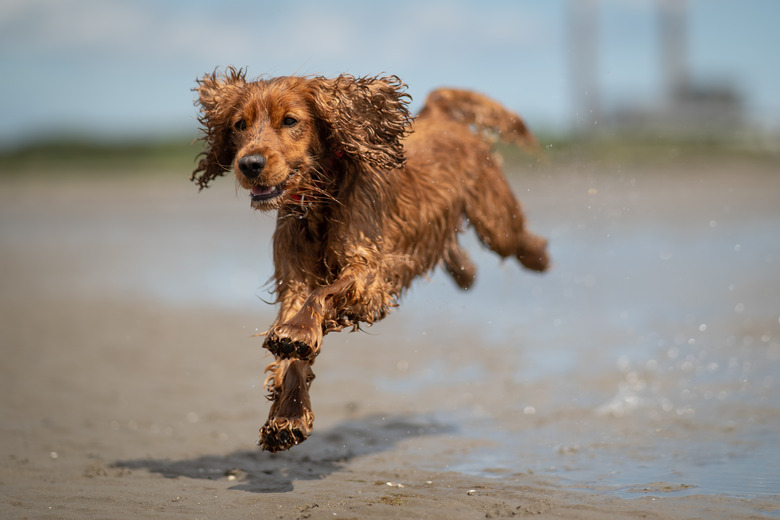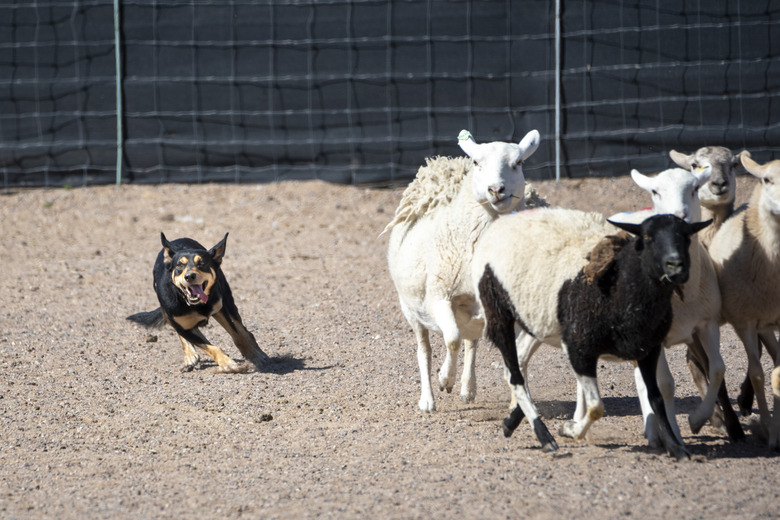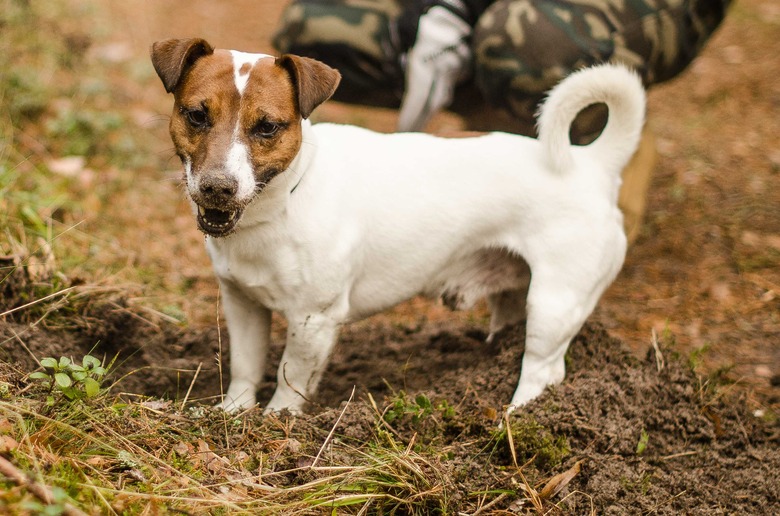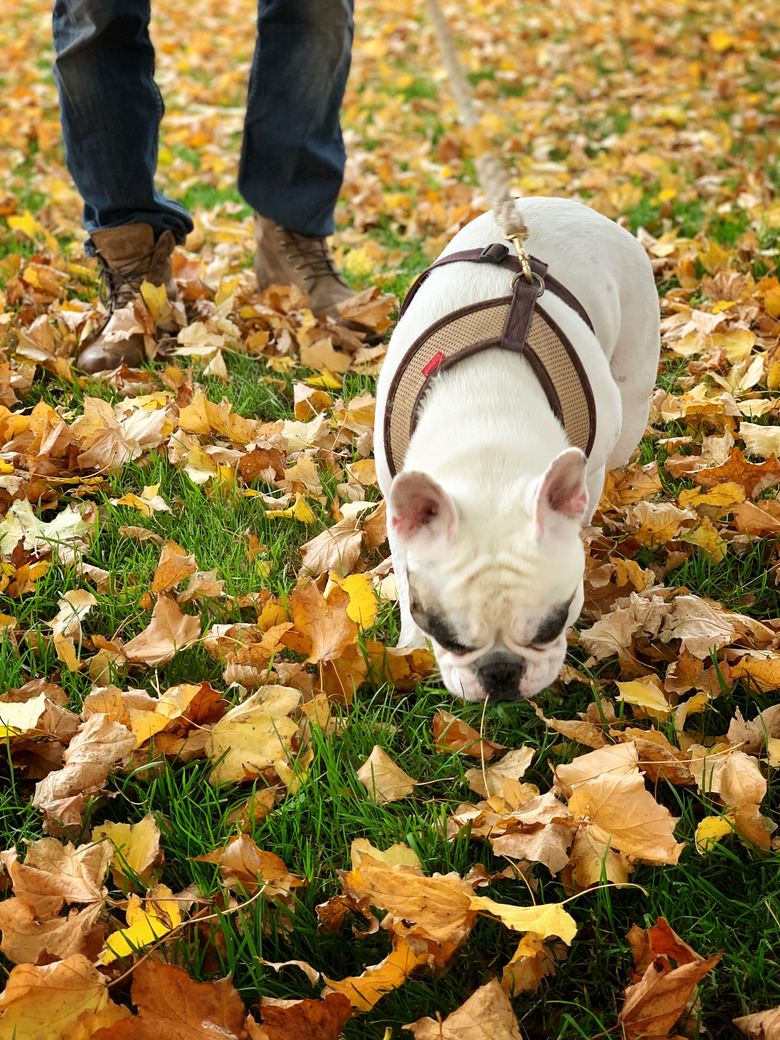Breed-Specific Enrichment: What Is It And How Can I Use It In My Dog's Life?
You've read all about enrichment as a concept, but now you need some specific actionable steps to take to actually implement it. Maybe you went out and bought some shiny new puzzle feeders and watched them flop as your dog paid little to no interest in them. Perhaps you have a newly adopted dog and you aren't quite sure what they'll like or where to get started. One avenue to figuring out the best enrichment plan for your particular dog is to take breed (or combination of breeds,) into account.
Let's start off with the caveat that every dog is an individual, and there are plenty of dogs who fall outside of the behavior "norms" of a given breed. That being said, we humans have been selectively breeding dogs for thousands of years and there are some powerful forces at play that affect their behavior in predictable patterns. When considering breed-specific enrichment, we want to consider the activity a type of dog was selected for, and figure out appropriate ways to fulfill those same needs. Kim Brophey, applied ethologist, behavior consultant and author, dives into this in her must-read book Meet Your Dog.
There are currently 197 recognized dog breeds in the American Kennel Club. This article unfortunately won't be able to go through every single one, but we can take advantage of the AKC's dog breed groups to cover many of them!
The Sporting Group
The Sporting Group
"Breeds in the Sporting Group were bred to assist hunters in the capture and retrieval of feathered game." -American Kennel Club
Sporting dogs include breeds like retrievers, spaniels, and pointers. Many of these dogs have a natural inclination to pick items up, key in to birds and other critters, or hop into any available body of water.
Games of repetitive fetch can lead to injury, but there are many other types of retrieval games you can play. You can teach your dog to put their toys away, hand you their leash when you drop it, bring in the paper or fetch you a beverage from the fridge. Alternatively, if your dog already loves their fetch, try putting a few rules around it for safety. Train your dog to hold a stay while you throw the toy, then release them to fetch it once it has landed. Keep your games nice and short and let them rest in between.
For water-loving dogs, especially if you live in an area without access to dog-safe bodies of water, nothing beats a wading pool or splash pad! You can add in floating toys, treats (blueberries, cheerios, and freeze dried meats all tend to float), ice cubes, or frozen homemade dog treats.
If your dog is especially active, there are a few specific sports that you might love, including dock diving and retriever field trials.
The Herding Group
The Herding Group
"The Herding Group comprises breeds developed for moving livestock, including sheep, cattle, and even reindeer." -AKC
Herding dogs like collies, shepherds and cattle dogs, are notorious for being high-energy and brilliant. That combination means that we need to find lots of ways to channel that into productive outlets.
Flirt poles (which you can purchase or make yourself) and herding balls are both wonderful toys to let your dog chase, nip, and control the movement of something in a socially acceptable way. We recommend short sessions with these toys to prevent your dog from becoming over-exerted or over-stimulated.
Given their natural inclination to work closely with their humans, training and mental stimulation are a must. Teaching your dog new tricks and behaviors frequently, enrolling in positive reinforcement training classes, and implementing various types of puzzle feeder are all easy ways to keep your herding dog mentally satisfied.
There is nothing quite like watching a herding dog do what they were bred to do. If you don't have access to livestock or herding classes, you can instead introduce your dog to the fun sport of Treibball and teach them to herd large inflatable balls through an obstacle course!
The Hound Group
The Hound Group
"All breeds in the Hound Group were bred to pursue warm-blooded quarry." -AKC
The hound group is very diverse and includes everything on the athleticism scale from the greyhound to the basset hound. The trick with these types of dogs is finding safe ways to simulate aspects of hunting live game.
For all of the sighthounds built for running at breakneck speeds and chasing down critters, flirt poles are going to make the list again. A slightly more intense and organized version of this would be the dog sports Lure Coursing and Fast CAT, which both involve the dog chasing down a toy attached to a zipline across a long track.
Scent work is going to be a hit for all of the breeds designed to use their noses to track down game. Foraging toys like a snuffle mat (which you can purchase or DIY) are an easy solution for any size of home. For a more interactive experience, you can hide treats, pieces of kibble, or toys and encourage your dog to use their nose to track them down. Have your dog wait in another room while you hide the goods, then release them to search!
The Terrier Group
The Terrier Group
"The feisty, short-legged breeds in the Terrier Group were first bred to go underground in pursuit of rodents and other vermin." -AKC
Terriers are the definition of "tiny yet mighty." Their high energy levels, tenacity, and intelligence make them a force to be reckoned with (if you're a rodent).
Many breeds of terrier are naturally inclined to dig. Rather than try to discourage the behavior altogether, we can channel that instinct into a fun game by setting up a digging pit! Take a plastic wading pool, litter box, or other large container and fill it with loose soil or pet-safe play sand. Next, take your dog's favorite treats, toys, and chews and bury them. Your dog will love diving in and uncovering treasures.
Terriers are one of the few groups of dog that will enact the full predatory sequence, including dissecting and consuming prey. A less morbid option would be to give your terrier cardboard boxes, toilet paper tubes, or junk mail to shred instead. Add a few treats into the container before sealing it back up for an added motivation.
Just like the hound group, scent games are likely to be a win for terriers. For a more specific sport where dogs are hunting for the odor of rats, squirrels, and other animals, go ahead and give Barn Hunt or Earthdog a shot. These sports allow your dog to "hunt" game without any risk to the animals.
The Toy Group
The Toy Group
"The diminutive breeds of the Toy Group are their own version of working dogs: they work hard at being attentive, affectionate companions." -AKC
The toy group is unique in that their dedicated "job" is companionship! There is a wide range of energy levels within this group, and despite popular belief, small dogs just as intelligent and trainable as their larger cousins.
Social enrichment, including quality one on one time with their people, should not be overlooked! A "lap dog" is likely not going to thrive living in the backyard and will flourish when in close contact with their people.
If your dog seems to enjoy the company of not just you, but everybody they meet, you could consider training in preparation for the Pet Partners Therapy Dog evaluation! Therapy dogs are trained to provide emotional support for a wide variety of people (as opposed to service dogs, who have been specifically trained to perform tasks for a single handler.) Not every small dog is inherently a fit for therapy work, and therapy dogs can be any breed, but many toy breeds do well in this line of work.
What about mixed breeds?
What about mixed breeds?
Everything in this list is merely a suggestion. Ultimately, it's up to you and your specific dog to figure out what combination of activities leads to the most enriched life possible. Luckily, for almost any breed of dog, we can count on a few common threads.
Decompression walks are an amazing form of enrichment for virtually all dogs. These walks allow the dog "freedom of movement in nature," in the words of trainer Sarah Stremming, who coined the term. Get your dog on a non-restrictive harness and long (10-30ft) leash, find a low-traffic area with grass, trees, and nature, and let them just be a dog. Let them sniff, let them chase, let them dig, let them run, let them play.




